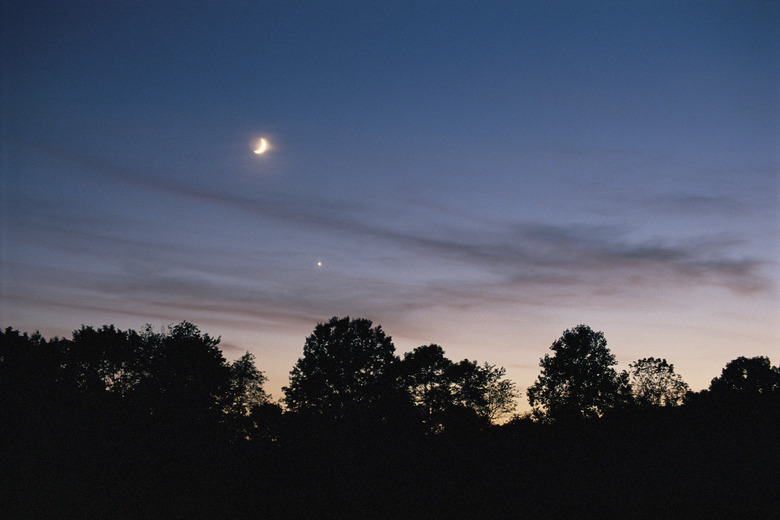Which Planet Is Considered Earth's Twin In Mass & Size?
Venus is most like Earth in terms of mass and size, and it is also the planet closest to Earth, but the two planets are far from identical twins. They spin in opposite directions, and whereas Earth has a temperate climate capable of supporting life, Venus is an inferno, with a thick, poisonous atmosphere and surface temperatures hot enough to melt lead. Most of what scientists know about Venus' topography has been obtained with radar imaging.
Slowly Spinning Backward
Slowly Spinning Backward
Venus is a terrestrial planet, like Earth, which means it is composed of rock, unlike the gas giants Jupiter, Saturn, Uranus and Neptune. Because of its proximity to the sun, it probably formed in the same way that Earth did, accreting matter from rocks and asteroids that circled the young sun. The retrograde motion of Venus is mysterious, however. Some scientists believe that it spins in the same direction as Earth, but its poles are oriented in the opposite direction. Two French scientists — Alexandre Correira and Jacques Laskar — believe that the sun's gravitation slowed Venus' rotation until the planet stopped and began turning in the opposite direction.
A Nightmare World
A Nightmare World
Venus' slow rotation — it spins once in 243 Earth days — is the probable reason for its weak magnetic field, which is only 15-millionths as strong as Earth's. Earth's magnetic field plays an important role in protecting the planet from solar winds. Because Venus lacks this protection, solar winds probably stripped lighter water molecules from its upper atmosphere. What remained was a dense mixture of carbon dioxide and acidic gases that settled close to the surface and created a runaway greenhouse effect. The resulting nightmare world has atmospheric pressures 90 times those of Earth and planet-wide temperatures of 465 degrees Celsius (870 degrees Fahrenheit).
Volcanoes and Coronae
Volcanoes and Coronae
A thick cloud cover of droplets of sulfuric acid reflects the sun's light efficiently, making Venus the brightest object in the night sky next to the moon and effectively preventing astronomers from seeing through it. The Magellan spacecraft mapped 98 percent of the surface in the 1990s, using radar imaging, and found mountains, plains and thousands of volcanoes with long lava flows. It also found features unlike any found on Earth. These features include coronae, which large ringlike structures 155 to 580 kilometers (95 to 360 miles) wide thought to have been formed when hot material rose up through the crust and warped the surface.
Shining Brightly
Shining Brightly
With a mean radius of 6,051 kilometers (3,760 miles) and a mass of 4.87 septillion kilograms (10.73 septillion pounds), Venus is slightly smaller than the Earth. At their closest approach, the two planets are only 38 million kilometers (23.6 million miles) apart, which is the closest any two planets in the solar system approach each other. At this distance, the apparent magnitude of Venus is minus 4. By comparison, the magnitude of the full moon is minus 13; that of Jupiter, the next brightest planet, is minus 2; and that of Sirius, the brightest star, minus 1.
Cite This Article
MLA
Deziel, Chris. "Which Planet Is Considered Earth's Twin In Mass & Size?" sciencing.com, https://www.sciencing.com/planet-considered-earths-twin-mass-size-18756/. 24 April 2017.
APA
Deziel, Chris. (2017, April 24). Which Planet Is Considered Earth's Twin In Mass & Size?. sciencing.com. Retrieved from https://www.sciencing.com/planet-considered-earths-twin-mass-size-18756/
Chicago
Deziel, Chris. Which Planet Is Considered Earth's Twin In Mass & Size? last modified March 24, 2022. https://www.sciencing.com/planet-considered-earths-twin-mass-size-18756/
